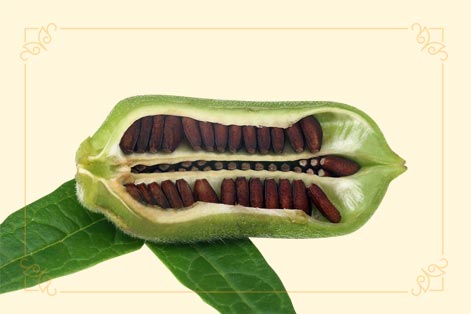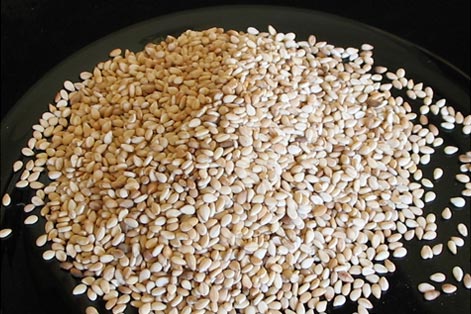History of Sesame
The scientific name of sesame is Sesamumindicum ('indicum' means 'from India') and the usage of this seed dates back to 3,000 BC. Being the place of origin for the seed, India is also the largest exporter of sesame seeds. Asia remains the second largest consumer of sesame. Its stability adds to its appeal in the world market.
History is replete with tales of Assyrian gods drinking wine made from sesame seeds before creating Earth, to Babylonians using the oil to make perfumes and Egyptians using it to make medicines and for ceremonial purification purposes. The seed is one of the first condiments used by man for its nutty crunch and its oil is one of the first edible oils to be extracted. It's mentioned in the Papyrus Ebers, the Egyptian book of medicine written in 1,550 BC, using text written in 3,600-3,400 BC.
A look into our past will reveal that the seed is an ancient symbol of immortality. According to an ancient Chinese legend from the Qing dynasty, a governor was sent to Yin Tai (present-day Japan) to find the holy medication for immortality at the behest of the emperor. It was said that this magic potion combined the energy of 3,000 young men and women who were of “pure spirit”. The governor searched the forests and mountains for this magical remedy. After many years, he returned with sesame seeds and asked the emperor to consume the seeds and its oil regularly for longevity. During funerals, Indians offer vases of sesame to help the dead in their passing.
The Compendium of MateriaMedica, the largest and most comprehensive medical writings in the history of Traditional Chinese Medicine (TCM) states, "Taking black sesame seeds can heal all the chronic illness after 100 days, improve skin tone on body and face after one year, reverse gray hair after two years, and regrow teeth after three years." The seal of approval bestowed upon sesame is reflected in world history and continues to be studied for its nutritional and health benefits.


